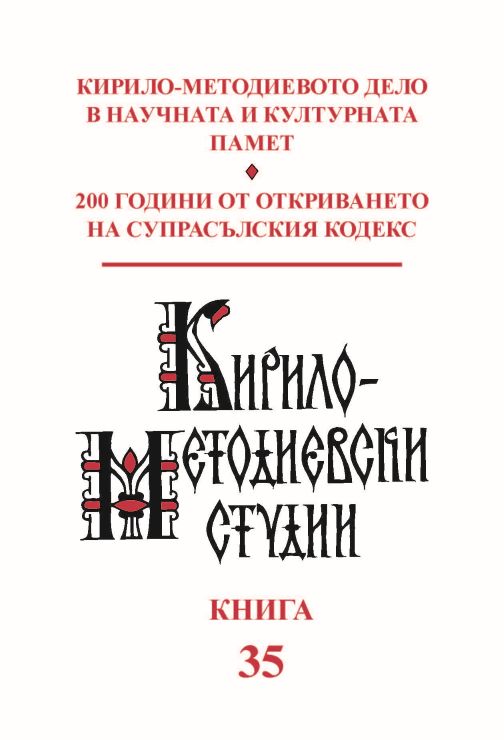Уникат или част от богослужебен комплект? Още веднъж за типологията на Супрасълския сборник
Unique or Part of a Set of Liturgical books? Once Again: The Typology of the Codex Suprasliensis
Author(s): Krassimir StantchevSubject(s): Language studies, Language and Literature Studies, Studies of Literature, Bulgarian Literature, South Slavic Languages, Philology
Published by: Кирило-Методиевски научен център при Българска академия на науките
Keywords: Old Bulgarian manuscripts; liturgical books; Codex Suprasliensis
Summary/Abstract: The author focuses on the questions who, when, where, and why wrote the Old Bulgarian Codex Suprasliensis. The first question, according to him, is and will always remain open: the hypothesis that the name Retko that can be read in the note on f. 104 of the manuscript is the name of the copyist is not convincing enough. To the question “when”, the majority of scholars are willing to accept the answer “to the last part of the 10th century”, and that seems to be the most probable dating. The same applies to the question “where”: in a writing center linked to the capital of the First Bulgarian Empire Preslav, but not to the region of Panagjurishte, as hypothesized by A. Marguliés, because in the 16th century, a mass population moved there from Macedonia and the present dialect is not that of the 9th–10th century. The answer to the question “why”, “with what purpose” the manuscript was written would seem to be the easiest, suggested by the manuscript itself, but in reality, it turned out to be quite complicated. It is to which the author devotes the most attention. That the manuscript can be divided into two parts, one hagiographic and the other homiletical, has always been known and commonly accepted. The problem is how to define the typology of the two parts. Definitions have recently been proposed that include the concept of ‘martyrologion’: ‘martyrological part’ for the first, ‘panegyricomartyrologion’ for the entire codex. The author finds these definitions not well motivated and anachronistic, therefore he proposes to stick to the more descriptive and more neutral definitions: Hagiographic part (the 1st) and homiletic or, wanting, panegygiric-homiletic part (the 2nd). In the end of the article, he expresses his conviction that the Codex Suprasliensis is the result of result of a conscious but mechanical, non-structural union of the two parts and in no way is it a harbinger of the hagiographical-panegryrical (macro)genre that will be born much later in the tradition of Slavia Orthodoxa.
Journal: Кирило-Методиевски студии
- Issue Year: 2025
- Issue No: 35
- Page Range: 525-534
- Page Count: 10
- Language: Bulgarian
- Content File-PDF

